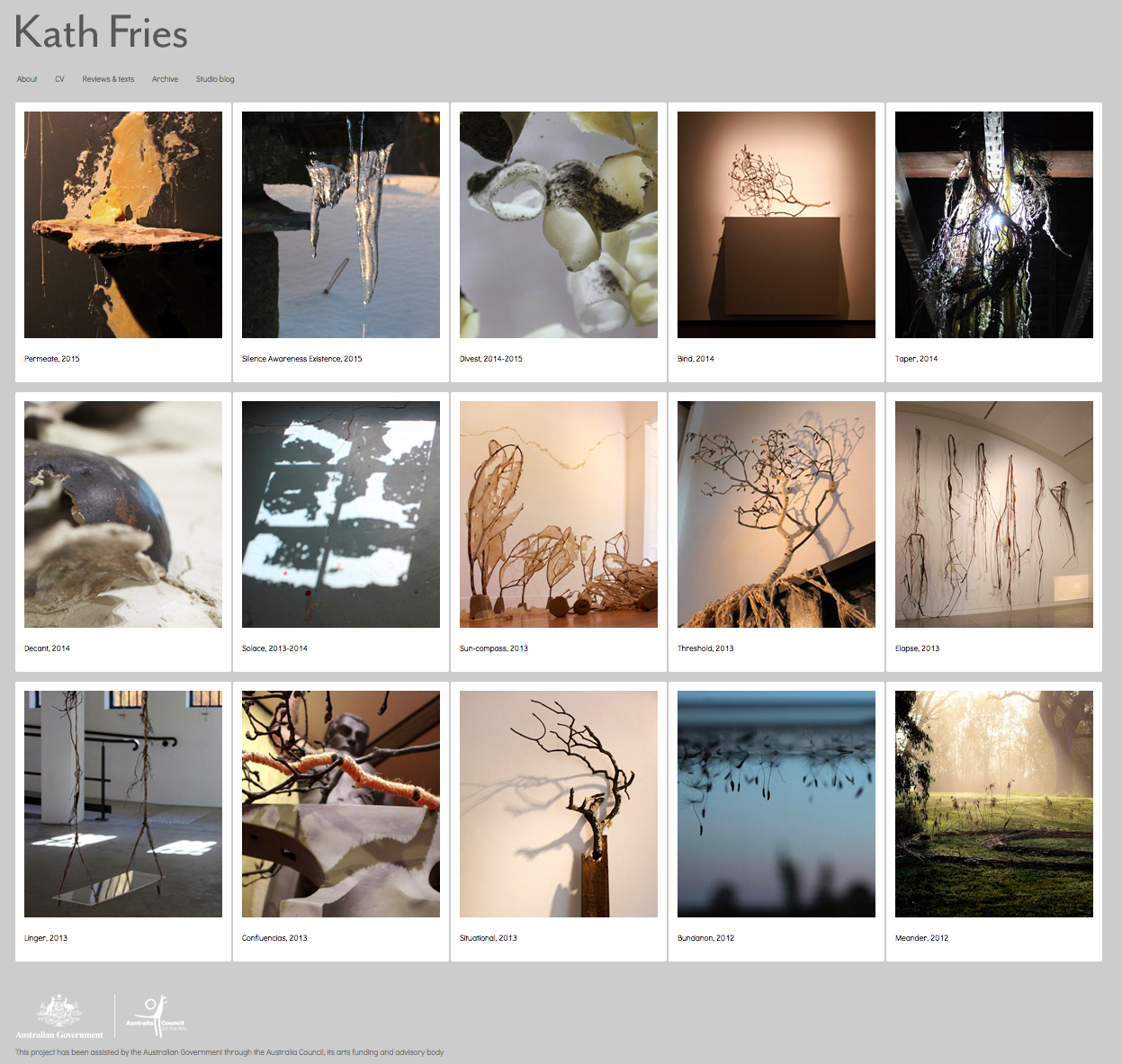Respire is an attentive meditation on breathing as an ecological and spiritual interconnection between humans and nonhumans, occurring both within the body and reaching beyond our skin's porous boundaries. The dried oyster mushrooms in this sculpture are ones I've grown in my previous installations Within and Without (2016-2017). Now these specimens are dead, dried and preserved within lung-like glass terrariums.
 |
| Kath Fries, Respire vii, 2018, glass terrarium, beeswax and dried oyster mushroom, approximately 38 x 16 x 16 cm |
The title Respire refers to breathing and that fact that fungi - just like humans - breathe in oxygen and exhale carbon dioxide, the opposite to plants. Breathing is unavoidably an interconnected ongoing activity: we are always breathing the same air as our surroundings, however we rarely pay attention to the essential life-sustaining activity of breathing.
Being attentive to one's breathing is fundamental to the practice of meditation. Each breath brings the world and the present moment into one’s body, whilst it releases the body back into the world in a continued cycle of interconnection. Meditation practice flows through cycles of focus, which requires frequent gentle reminders to return one's attention to the breath, bringing one back to the present, to the immediacy of the here and now.
We live immersed in the medium of air, inseparable from it for our biophysical, metaphysical and economic needs. We share this common breathing space with all things, living and non-living, from the regenerative forest to the smoke-belching factory. All influence our common airspace.
- Mark Everard, Breathing Space: The Natural and Unnatural History of Air, (London: Zed Books, 2015), 25,111.
 |
| Kath Fries, Respire i-xiii, 2018, glass terrariums, beeswax and dried oyster mushrooms, each approximately 38 x 16 x 16 cm |
To breathe with others - not just other people - but also fungi, buildings, rocks, cars, animals, rivers, oceans, trees and plants; is to feel the actuality of being present with the interconnections of the biosphere. Although this may seem like it should be easy enough to do, it often feels extremely difficult to focus on attentively, as one becomes caught up in worrying about the future, gripped by a sense of tension, stressed, holding one’s breath; as tend to get so caught up in ourselves that we overlook these fundamental interconnections of existence.
What the plants are quietly breathing out, we animals are breathing in: what we breathe out, the plants are breathing in. The air, we might say, is the soul of the visible landscape, the secret realm from whence all beings draw their nourishment. As the very mystery of the living present, it is that most intimate absence from whence the present presences. - David Abram, "The Commonwealth of Breath," in Material Ecocriticism, ed. Serenella Iovino and Serpil Oppermann, (Bloomington, IN: Indiana University Press, 2014), 226.
Breathing is an ever-present mode of essential exchange with the world, integral to our interconnections and entanglements with the Earth and to being alive. Respiration is simply breathing, to respire attentively is to loosen one’s grip on the fears and anxieties generated in one’s mind. To breathe mindfully and compassionately with one's surrounds is to embrace the openness of reciprocity. Such haptic breathing with the world allows predetermining mental chatter to drop away, then receptivity can arise.
I try to relax, and so begin to breathe more deeply, enjoying the [air] … as it floods in at my nostrils, feeling my chest and abdomen slowly expand and contract. My thinking begins to ease, the internal chatter gradually taking on the rhythm of the in-breath and the out-breath, the words themselves beginning to dissolve, flowing out with each exhalation … The interior monologue dissipates, slowly …
- David Abram, The Spell of the Sensuous: Perception and Language in a More-Than-Human World, (New York: Vintage Books, 1997).
Moving so slowly, the dissipating seeping rim of beeswax at the base of each glass cylinder-lung in Respire resonates with this sense of breathing as well as with other material metaphors and ecological cycles. Bee and insect pollination is essential for healthy biodiversity. Similarly to treat illness in the human body, bee products like beeswax, honey and royal jelly are widely used in traditional medicines. Perhaps Respire’s mushrooming growths within the glass vessels may suggest lungs in distress, a fungal infection or pneumonia. However a healthy human body can contain over 100 fungal species, indeed our microbiome bodies always contain trillions of microorganisms. We are - each in and of ourselves - walking, breathing complex ecosystems of many life forms co-existing and breathing together.
--
This artist statement includes an adapted extract from my 2017 PhD thesis 'Touching Impermanence: experiential embodied engagements with materiality in contemporary art practice', pages 191-192. Please see my public access digital thesis in the 'The Sydney University eScholarship Repository' for the full original text - https://ses.library.usyd.edu.au/handle/2123/17880
--
Respire is being exhibited in the New Contemporaries exhibition at SCA Galleries until 2 June 2018, SCA Galleries, Sydney College of the Arts, Kirkbride Way, Lilyfield NSW, http://sydney.edu.au/sca/galleries-events























%2BWhite%2C%2BBRANCH%2B3d.jpg)














.jpg)














